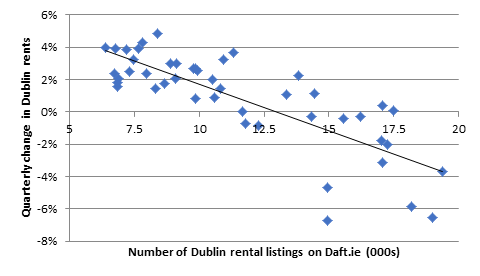Recycling the city – our problem with vacant homes
This week, one of the co-founders of Twitter – Biz Stone – was in Dublin and, while here, helped launch an online mapping tool called Reusing Dublin. The tool is a collaboration between Space Engagers, a social enterprise, and the Peter McVerry Trust, one of the country’s leading housing non-profits.
The tool is online, at reusingdublin.ie, and is pretty straightforward in its design: if you know of a derelict or vacant home, you can go on to the site and post it. I’m lucky enough to be able to walk into work most days and it’s amazing how many empty homes – or flats above shops – there are once you take the time to look.
If successful, it will identify thousands of empty homes around the city, as well as sites that could be used. This in turn will help the city tackle what is a persistent issue, not just in Dublin but in Ireland’s other cities: high vacancy rates.
Seven or eight years ago, if you asked someone on the street to picture vacant homes in Ireland, they would probably describe a ghost estate. But ghost estates have by-and-large faded from relevance. Figures out this week show that the number of ghost estates in the country is down over 90% since 2010.
There are now 256 ghost estates nationwide and the majority of those are at least partially occupied. Indeed, of the 180,000 units in ghost estates back in 2010, the vast majority were either homes that had not even been started or else homes that were already occupied.
There are, in total, just 678 homes in the country that are in ghost estate, complete but sitting empty. That is about five days worth of housing demand.
But the paradox, though, is that despite the ghost estate issuing largely being resolved, vacancy is still a huge issue in a country with a housing shortage. In the 2016 Census, 13% of homes were vacant. If they are not in ghost estates, though, what are they?
The answer is that Ireland’s vacant homes fall roughly into three categories. Two of those categories are rural. In rural Ireland, there are one-off homes built during the Celtic Tiger – often adjacent to another dwelling – that are empty.
And there are also the older rural cottages, many of which have sadly passed their sell-by date. Ireland’s rural population is shrinking – and will continue to do so over coming decades. Those that remain in rural locations are likely to want a payoff, in terms of living space, for being far away from most amenities.
The final category are Ireland’s empty urban homes. And here is where things get weird. Strictly speaking, we know almost nothing about, for example, Dublin’s empty homes. What we do know is that the vacancy rate is higher in Dublin City Council than in the other local authorities. This suggests that the problem is related to older urban homes.
What is particularly frustrating is that Dublin – and indeed all Irish towns and cities – lack the basic information needed to manage their housing stock effectively. Across Europe, municipalities and city councils have complete registers of who owns what and who lives where. Irish cities have neither.
There is a Land Registry, in other words a register of who owns what, but it is incomplete, especially in the cities, where an older system, the Registry of Deeds, was used until recently. The Registry of Deeds is not map-based so finding out who owns what is a very complicated affair.
Not only that, while the Land Registry is now compulsory for transactions, this compounds the problem. If ownership is unclear or unknown, a dwelling or a site will never be transacted and thus never go on the Land Registry.
And Irish local authorities do not know who lives where. I remember distinctly, while an undergrad on Erasmus, being required to register with the Aliens Office in Cologne. I remember it so clearly because I took offence at the name! But whatever you call it, it makes sense for a city to know who many residents it has and where they live.
Of course, the principal reason cities around the world keep track of who owns what and who lives where is that they levy a property tax and thus want to make sure that everyone pays. Indeed, a reasonable number of homes are foreclosed each year in the US not by banks but by the city, for unpaid property taxes.
Our local authorities don’t have a property tax, at least not one on the same scale as the rest of the developed world. Therefore, if you don’t have the stick, you need to use the carrot.
The ‘Reusing Dublin’ app is one such carrot, because it highlights the opportunities being wasted in front of our eyes. Let’s all look around and take a note of empty or derelict sites and homes. This will at least give information to policymakers that their peers in other countries take for granted.
==
An edited version of this post was originally published in my column in the Sunday Independent.
